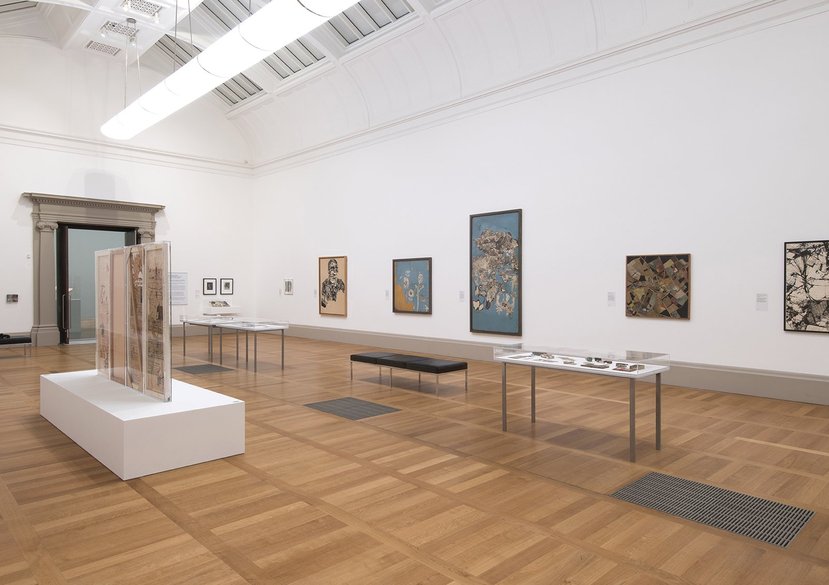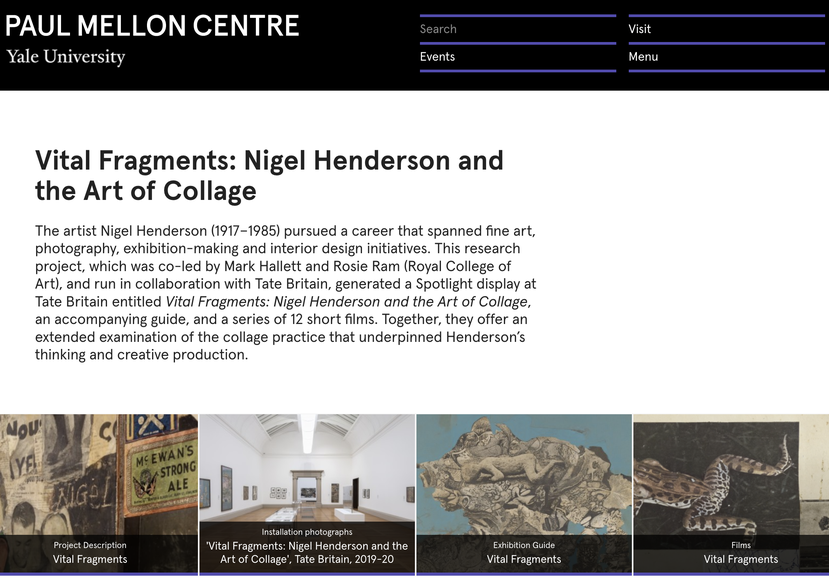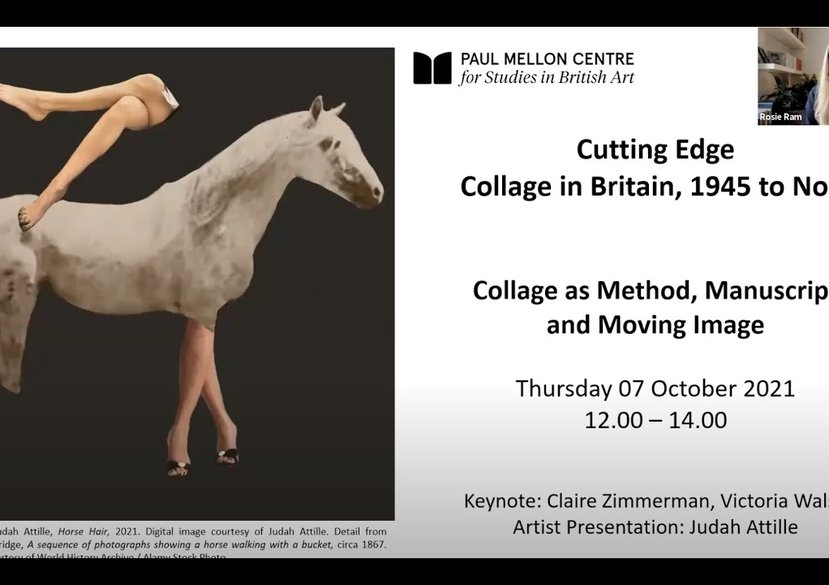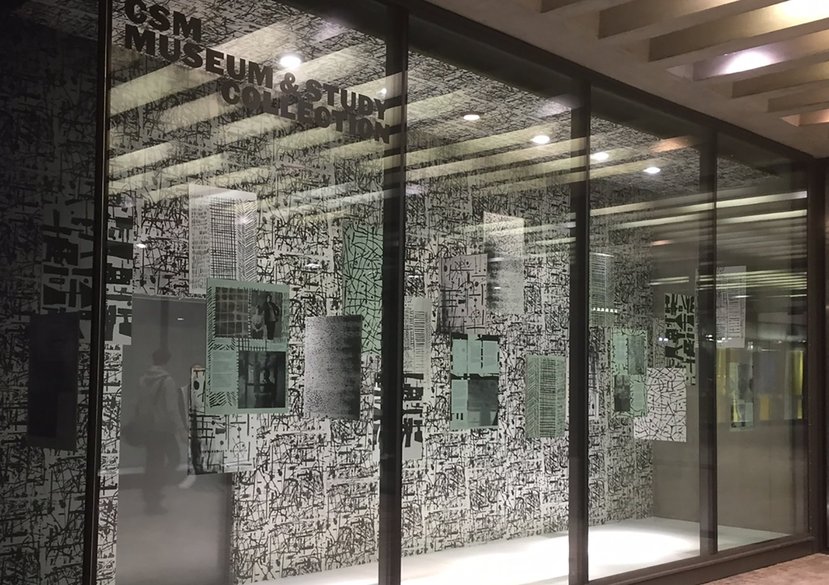
Image as Method: Nigel Henderson and the Art of Research
This thesis argues that the work of the British artist Nigel Henderson (1917-85) generated materials that eschew fixed attribution and are incompatible with the conventions of museological codification and display. In post-war London, Henderson advanced a mode of practice that was indeterminately collaborative, authorially complex, photographically replicative, and replete with readymade elements. This form of work was not oriented towards the production of finite artistic forms; rather, it sought destabilising and disruptive ways of looking at and thinking about the modern world. This thesis proposes that the artist’s work during this period should be reconceived as a kind of research practice. Comprehending it as such, I argue, not only allows the most processual, provisional, and obscure elements of his output to be analysed and valued, but it also challenges rationalized and positivistic understandings of research itself.
This thesis takes as its focus highly ephemeral traces of Henderson’s practice that have an uncertain status in the present, which are divided between the archive at Tate and the holdings of the Nigel Henderson Estate. Rather than relegating these items – which comprise photographic negatives and photographically replicated positive prints – to the role of archival documentation or elevating them to the position of artworks destined for a collection, I argue that they should be mobilised methodologically as research materials that are irreconcilable with such classifications. Furthermore, I argue that the research function of Henderson’s practice cannot be understood unless the interstitial position of this photographic work is sustained. My handling of these materials is informed by Gregory Sholette’s notion of dark matter, and my conception of research work draws upon John Roberts’ theorisations of artistic labour and the avant-garde.
This thesis is structured by the four most significant sites in which, I claim, Henderson’s practice emerged as a mode of research in post-war London: the art school, the private interior, the exhibition, and the photographic negative itself. Crucially, I demonstrate the value in reconceiving of these as dynamic research scenes in which the images Henderson mobilised can function methodologically. By tracing the transition of his practice across these different zones of activity, I reveal the ways in which it operated in tandem and tension with modes of labour in other fields. In doing so, I demonstrate how the artist’s investigative practice remained obfuscating and inchoate and, therefore, critically misaligned with more regimented and recognised forms of research work, which could be instrumentalised in industrial, commercial, academic, or governmental drives towards progress and prosperity in Britain after the Second World War.
Ultimately, this thesis positions Henderson’s research practice across the inverted interface of the photographic negative, revealing how his work functioned through the alternative temporalities and spatialities of photographic technology. I argue that photographic negativity served as the material, technological and conceptual basis of this form of research, fostering its strategies of latency, displacement, self-elision, and dissociation. In conclusion, I claim that the knowledge generated by the artist’s work was itself inversional, offering a darkened lens through which to perceive a negative image of modernity. This concluding analysis invokes Theodor Adorno’s method of negative dialectics to argue for a negative kind of knowledge production. However, I argue that the curatorial presentation of the traces of Henderson’s practice within museological contexts – which conventionally seeks to resolve the uncertainty of his photographic work and sees his negatives converted into positive form – suppresses their capacity to function methodologically as research materials and to generate knowledge negatively.
Key details
School, Centre or Area
Area of expertise
Supervisors
Funding
-
Arts & Humanities Research Council (AHRC)
Gallery
More about Rosie
Biography
Dr Rosie Ram is a Visiting Lecturer in Curating Contemporary Art at the RCA and Academic Leader of the Curating Contemporary Art and Design: Theory and Practice summer school. Rosie is a specialist in modern and contemporary visual culture and curating. In 2021, she completed her AHRC-funded PhD at the RCA, 'Image as Method: Nigel Henderson and the Art of Research'. Most recently, she co-curated Vital Fragments: Nigel Henderson and the Art of Collage at Tate Britain (2019-20) and co-convened the international conference Cutting Edge: Collage in Britain, 1945 to Now (2021). Rosie's research has been supported by an AHRC International Placement Scheme fellowship at the Yale Center for British Art (2018). She has curated displays, taught, and programmed events at Tate, the Institute of Contemporary Arts (ICA), Central Saint Martins, and Chelsea College of Arts, as well as having her writing published in journals such as Art History and the Burlington Magazine. Prior to her doctorate, Rosie worked at Chisenhale Gallery in London.
Degrees
PhD, 'Image as Method: Nigel Henderson and the Art of Research', Curating Contemporary Art programme, School of Arts and Humanities, Royal College of Art (examined by Professor Lynda Nead FBA, Pevsner Chair of the History of Art at Birkbeck, University of London, and Dr Martin Myrone, Convenor of the British Art Network), 2021.
MA Culture, Criticism & Curation (Distinction), Central Saint Martins, UAL (Vice Chancellor’s Scholarship for Academic Excellence), 2013.
Experience
Visiting Lecturer, MA Curating Contemporary Art, School of Arts and Humanities, RCA (current); Academic Leader, Curating Contemporary Art and Design: Theory and Practice, RCA (current); Co-convenor, Paul Mellon Centre Doctoral Researchers Network (2018-19); Visiting Scholar at Yale Center For British Art, Yale University, AHRC International Placement Scheme (2018); PhD Teaching Assistant, 'The Ephemeral and the Fragmentary: towards other ways of mattering’, MA cross-programme, RCA (2018-19); BA Fine Art, Liverpool Hope University; MA Culture, Criticism and Curation, CSM; BA Textile Design, CSM; School of Arts & Humanities Research Student Representative & Council Representative, RCA (2017-18); Programme & Operations Coordinator, Chisenhale Gallery, London (2015-2017).
Awards
'Knowledge Exchange Champion Award: Most Innovative Knowledge Exchange Project of the Year', RCA (2021). Prize awarded for development and delivery of the Curating Contemporary Art and Design: Theory and Practice Summer School, which was offered online for the first time in 2021.
Funding
PhD funded by the Arts and Humanities Research Council (AHRC); AHRC International Placement Scheme (2018); AHRC Work Placement Fund for six-month curatorial placement at Tate Britain (2019); AHRC Study Support Fund for conference visits throughout (2017-20).
Exhibitions
Co-curator, Vital Fragments: Nigel Henderson and the Art of Collage, Tate Britain (2019-2020); Co-curator, Flow and Flux TECHNE Research Show, Triangle Space and Cookhouse Gallery, Chelsea College of Arts, UAL (2018); Curator, In Collaboration: Eduardo Paolozzi at the Central School, 1949-55, Central Saint Martins Museum & Study Collection, UAL (2017); Co-curator, 'Anthony Caro: The Inevitable Revolution', Central Saint Martins, UAL (2014).
Publications
‘A Question of Dependence’. Art History 44 (2021): 424-428, commissioned double book review. https://doi.org/10.1111/1467-8365.12566; Art and Masculinity in Post-War Britain: Reconstructing Home’. The Burlington Magazine 1421, vol. 163 (August 2021): 772-773, commissioned book review; Co-author, Vital Fragments: Nigel Henderson and the Art of Collage, exhibition booklet, Tate Britain, 2019; Co-writer and co-producer, Collage in Action: Nigel Henderson’s Screen, 12 short films, Tate Britain and Paul Mellon Centre, 2019; Co-author, ‘Dark Times’, Tate Etc. magazine, issue 48, 2019; Lead Editor, Prova, RCA Research Journal, issue 4, 2018
Conferences
Cutting Edge: Collage in Britain, 1945 to Now, international conference and workshop programme (co-convenor), Paul Mellon Centre and Tate Britain, online (2021); Curating Vital Fragments, seminar, Tate Britain (2020); The Central School of Arts and Crafts: An "informal nucleus" of collaborative practices in post-war London, research seminar, Paul Mellon Centre (2018); Collage & collaboration in post-war Britain: John McHale's scrapbooks, joint fellows seminar, Yale Centre for British Art, Lewis Walpole Library & Beinecke Rare Book & Manuscript Library, Yale University (2018); Art & the Urban, symposium (co-convenor), Royal Holloway University of London, (2018; funded by TECHNE, AHRC); Art is no Business, symposium (co-convenor), Kingston University London, (2018; funded by TECHNE, AHRC); The Art School and the Studio, seminar series, Chelsea College of Arts, UAL (2017-18); “Discarded things, vituperative fragments”: Rethinking value within the Nigel Henderson Archive, Value conference (keynote lecture), Royal College of Art and Central Saint Martins (2017); Creative collaboration and post-war prints, TECHNE student conference, Amnesty International (2017); In Collaboration: Eduardo Paolozzi at the Central School, symposium (convenor and contributor), Central Saint Martins (2017; funded by RCA and CSM)



